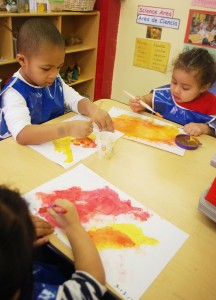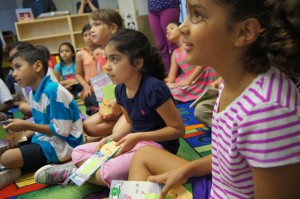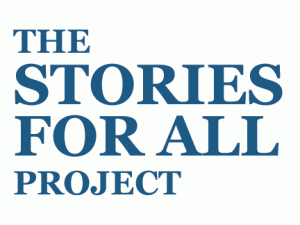My Brown is Beautiful, See it Please (Guest Post)
Many thanks to Jasmine Villaverde-Mickens, Literacy Program Manager in Education, for this post.
First graders at CentroNía’s DC Bilingual Public Charter School made self-portraits — with strokes of a brush, they were tasked to find their skin tone by mixing various colors of paint.
 “Look at my brown,” one student said. “Hey, look at my brown, too,” insisted another. “Ooooh, I like your brown,” exclaimed another student. The first graders praised each other with excitement, as they playfully compared the variety of colors.
“Look at my brown,” one student said. “Hey, look at my brown, too,” insisted another. “Ooooh, I like your brown,” exclaimed another student. The first graders praised each other with excitement, as they playfully compared the variety of colors.
As a Family Literacy Program Manager at CentroNía—a bilingual, multicultural educational institution— activities like the self-portrait project remind me the role that educators have in challenging colorblind approaches to learning and affirming positive messages about culture and identity through class materials.
Too often we are nudged to teach with a colorblind approach. Although the intention is noble, we miss countless opportunities to creatively reinforce positive messages about identity and the beauty of peoples’ heritage.
This important concept inspired CentroNía’s partnership with First Book—an organization that provides new books to children in need nationwide. Together we are making sure that students have books that honor diversity (just like the self-portrait painting assignment). Books are pivotal and necessary to teach, celebrate, and embrace identity.
 Without doubt, the stories and characters in books greatly influence what we learn about who we are and who we believe we can be! With this in mind, First Book brought bilingual author Lulu Delacre to CentroNía’s library earlier this month. Twenty second graders listened attentively to her book titled, Rafi y Rosi. The main characters were the coquís (tiny frogs endemic to Puerto Rico), who took the readers on a cultural journey to the island and shared its regional vocabulary and pastimes. Delacre’s enthusiastic style of reading and visual expression with props made this Monday morning unforgettable for many kids and adults in the room.
Without doubt, the stories and characters in books greatly influence what we learn about who we are and who we believe we can be! With this in mind, First Book brought bilingual author Lulu Delacre to CentroNía’s library earlier this month. Twenty second graders listened attentively to her book titled, Rafi y Rosi. The main characters were the coquís (tiny frogs endemic to Puerto Rico), who took the readers on a cultural journey to the island and shared its regional vocabulary and pastimes. Delacre’s enthusiastic style of reading and visual expression with props made this Monday morning unforgettable for many kids and adults in the room.
It was an enriching experience all in one: educational, fun and interactive. I left thinking every book should be a story as rich and culturally explorative as Rafi y Rosi. As educators committed to cultivating life-long learners and critical, global thinkers, we have a social responsibility to integrate culturally relevant material into our pedagogy.
 With a growing Latino population, it is refreshing to see characters in children’s books that look like the children we serve every day. It is especially encouraging to see First Book take the lead in diversifying their book offerings for young children so the protagonists accurately reflect the changing demographics of our country and its children.
With a growing Latino population, it is refreshing to see characters in children’s books that look like the children we serve every day. It is especially encouraging to see First Book take the lead in diversifying their book offerings for young children so the protagonists accurately reflect the changing demographics of our country and its children.
In fact, First Book has committed to help intellectually enrich underrepresented communities by donating books to CentroNía’s Family Book Clubs, among other programs. Together, we will continue creating literacy ventures that foster interactive reading experiences between children ages 0-5 years old and their parents.
I take pride in our unique partnership because together we are providing quality bilingual, multicultural education to all children year-round. Whether students are learning to appreciate and embrace diversity with a paintbrush or a book—what’s important is the exposure to those experiences.




